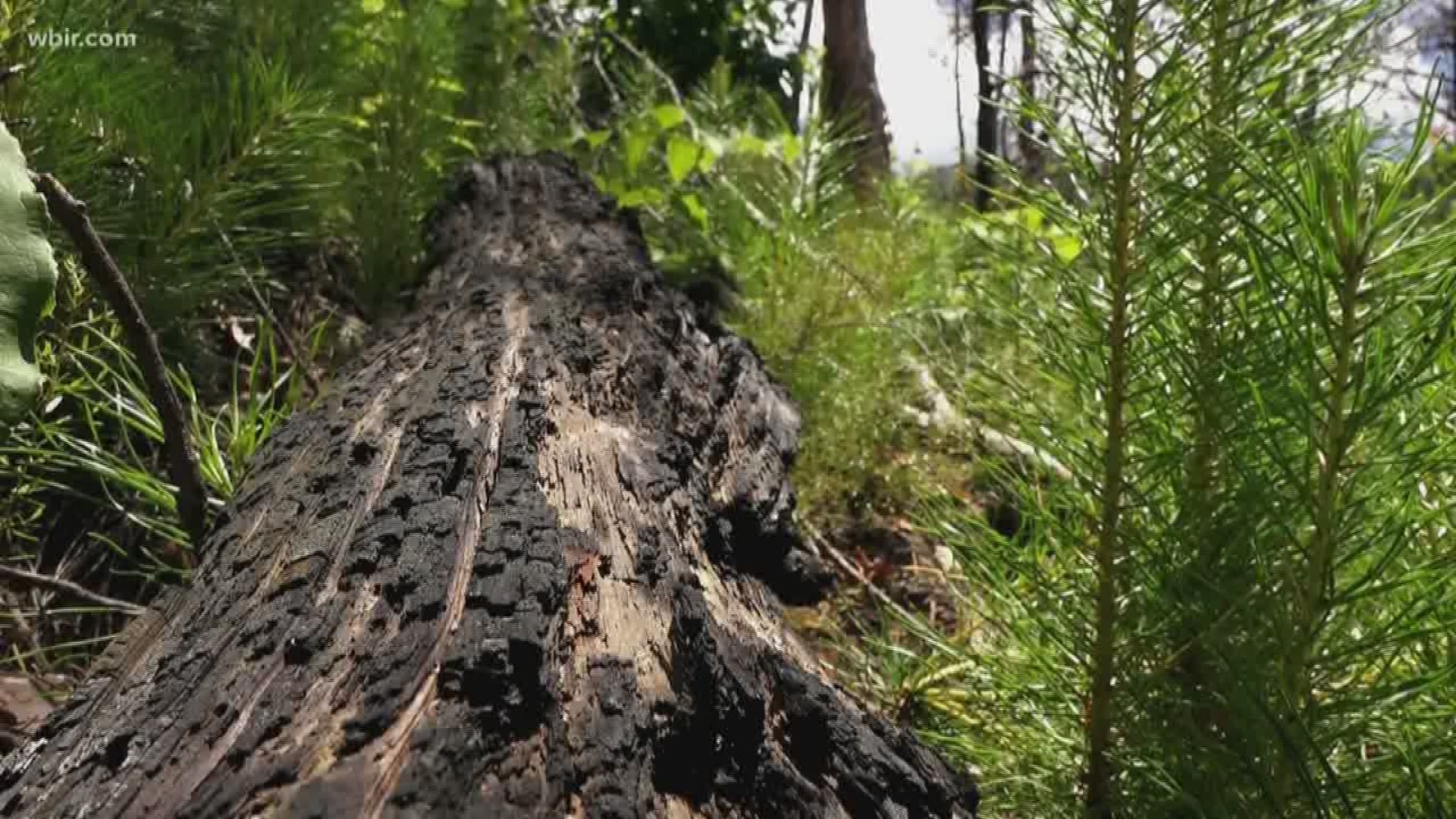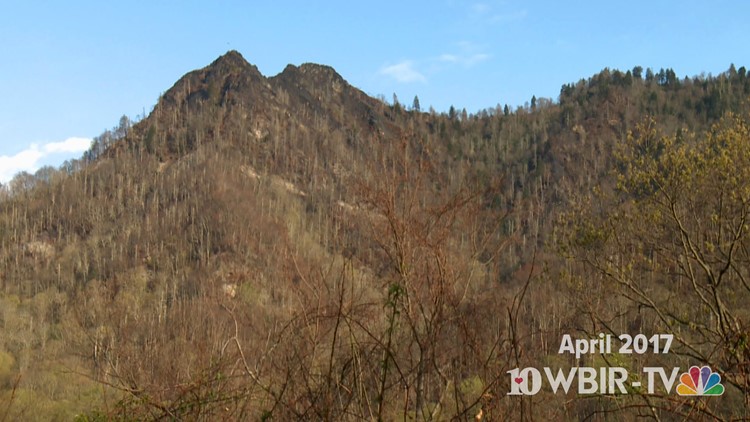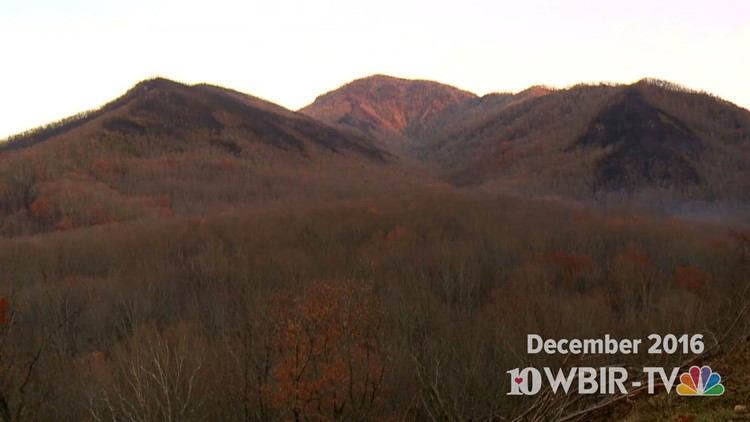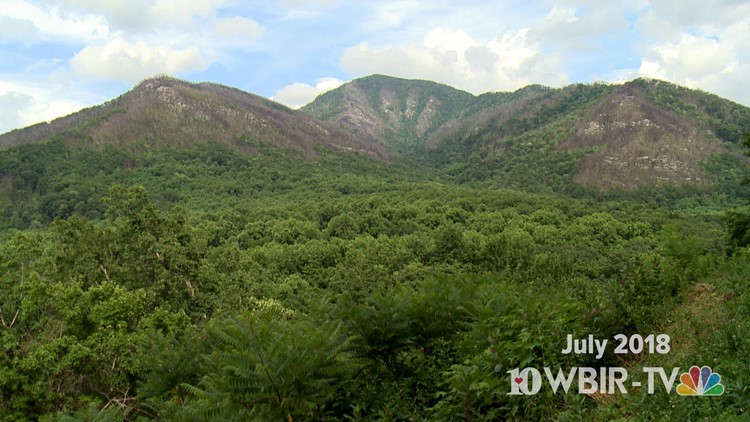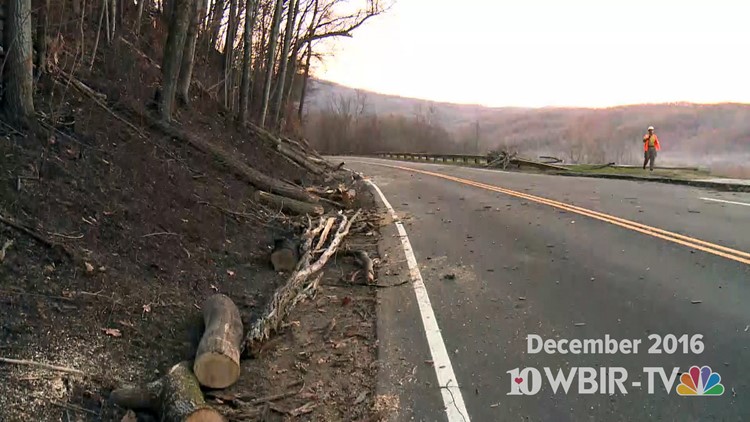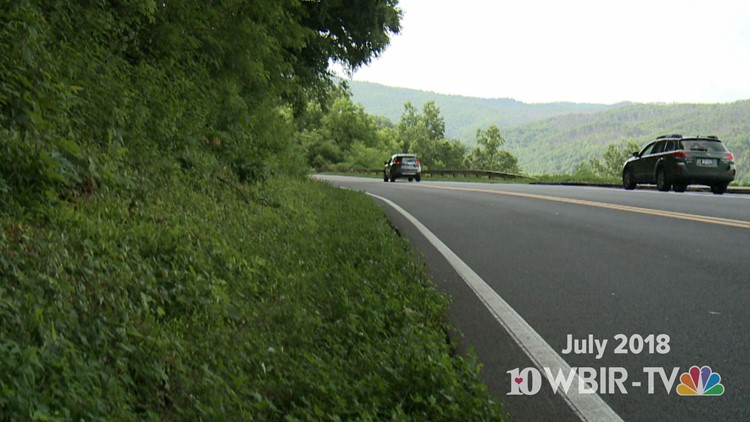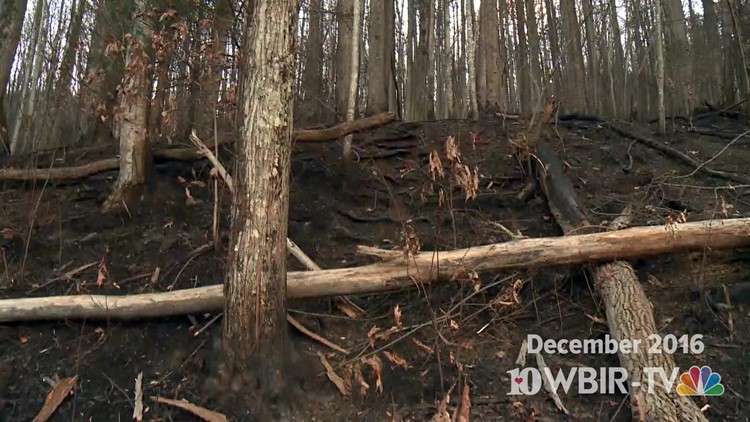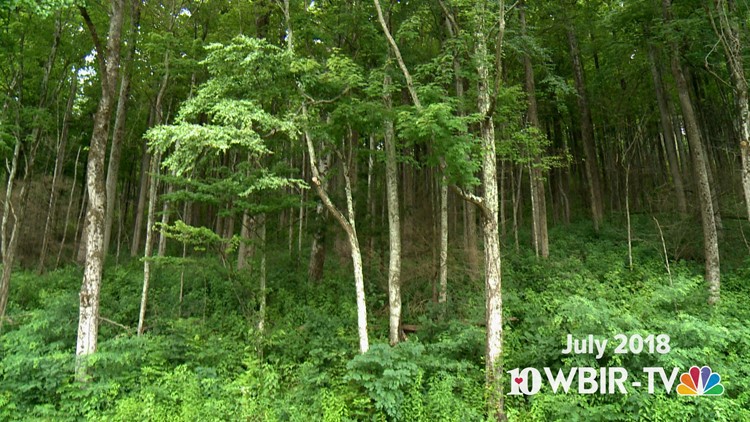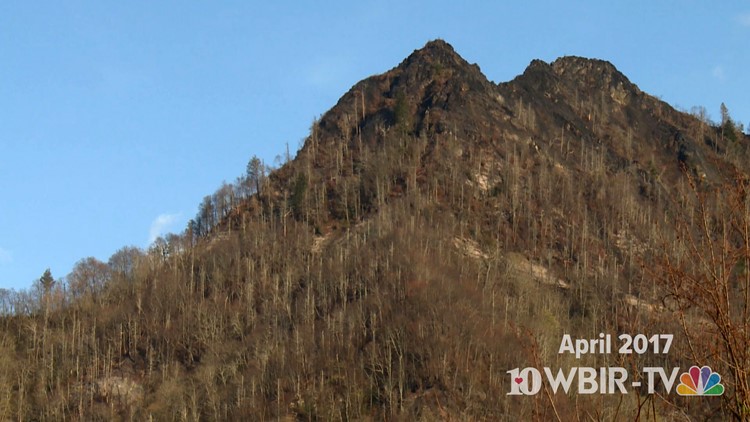An explosion of fresh green growth is filling the blackened ridges where deadly wildfires burned in the Great Smoky Mountains and Sevier County in November 2016.
Scars on the land are still visible where the fire burned with the most intensity, but the soot-covered soil now features sprouting vegetation. Photos from nearly-identical angles show just how striking green-up is in areas along Newfound Gap Road from the Chimney Tops to Gatlinburg. (Note: See then-and-now comparison photo gallery at the bottom of this article or at this post on our Facebook page)


In many areas of the park that burned, you have to look closely for evidence of the fire. That includes areas near Twin Creeks and Roaring Fork, where the fire moved fast and mostly impacted smaller trees and shrubs.
"For a lot of people, in a couple of years it will be hard to tell an area like this burned," said Rob Klein, fire ecologist for the National Park Service. "Around 70 percent of the area that burned in the park is what we would call a low-severity fire. The big trees in those areas survived and the effects were mostly on the ground in the understory. A lot of those plants have re-sprouted and grown back quickly."


In areas where the fire burned intensely enough to truly ravage the forest, a dwindling native species of pine tree is getting a fresh start.
"It is one of the more interesting stories about this fire. The Table Mountain pine tree needs fire to reproduce. The tree adapted over thousands of years to expect fires. The cones stay shut on the tree for 10 to 20 years until a fire comes along. The heat from the fire breaks down the resin that seals the cones shut. The cones open up and release seeds with wings that float and spread all along the burned ground. Those areas that were covered by a canopy of trees are now open with sunlight for the seeds to take root and grow," said Klein.

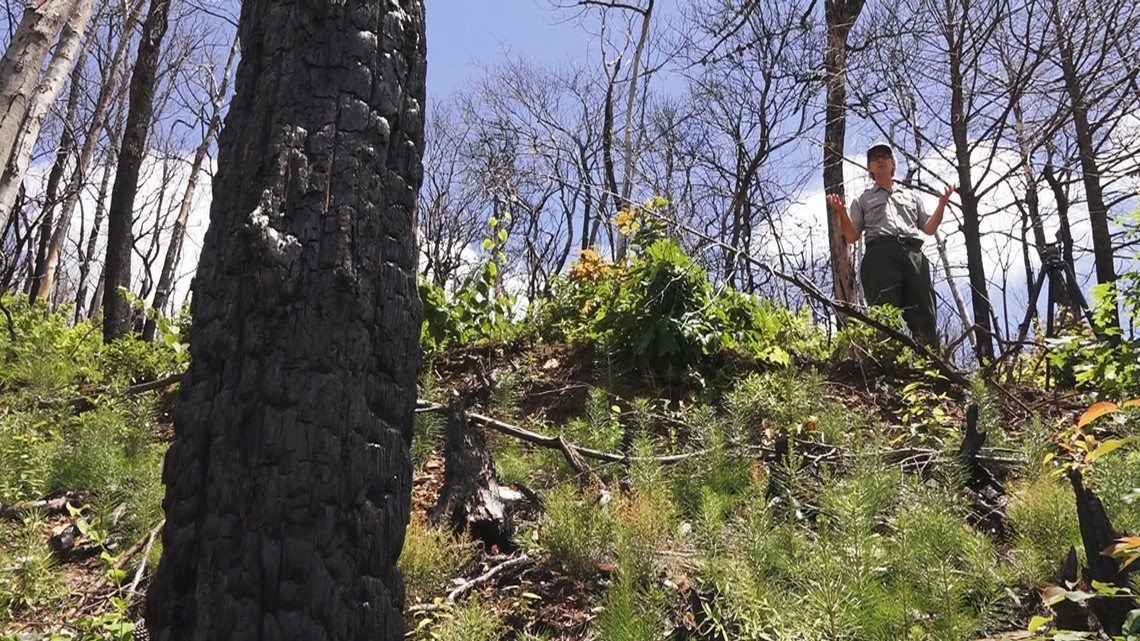
The Table Mountain pine has dwindled over the last century as firefighting techniques and polices have evolved.
"We know there were large fires in the southern Appalachians for thousands of years. Fire was a normal thing and many species adapted to expect fire. The Table Mountain pine adapted with a strategy of mass reproduction after fires. Without fire, these kind of trees disappear from the landscape," said Klein.
On the ridges near Roaring Fork along Baskins Creek Trail, the towering Table Mountain pine trees are dead and the ground is covered in hundreds of seedlings where the baked cones released seeds into the soil.


"It's going to be an unbelievable transformation. Over the next 5 to 10 years, they're going to grow taller than people and it's going to become a very dense thicket of pine," said Klein.
Along with the resurgence of a new generation of Table Mountain pine trees, the areas opened by fire will also feature the reintroduction of other wildlife.
"There are lots of species that depend on open habitats like this. You have wildflowers that will bloom here because they suddenly have sunlight. Even things like red-headed woodpeckers, because it depends on habitat like this where the forest floor is open and low-growing along with dead trees to den in and look for food," said Klein.


Klein says observing how the burned areas of the park recover is important as scientists try to learn and become well-prepared for future disasters.
"We have been putting out fires here for a very long time and have lost some of the knowledge of how they operate on this kind of landscape. What we're seeing here are the natural processes of recovery. It gives us a chance to relearn some of those lessons and be better-prepared if or when they happen in the future," said Klein.

